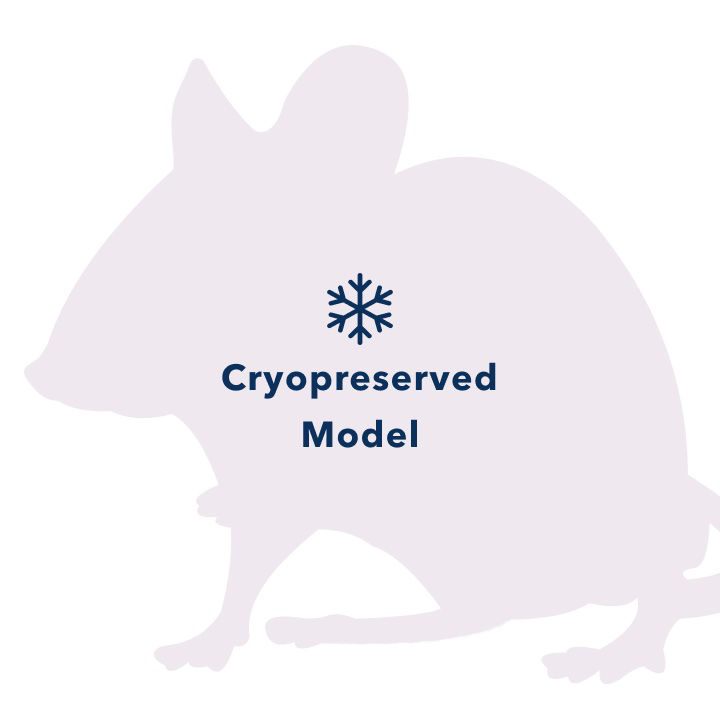| Model No. | Nomenclature | Genotype |
|---|---|---|
| 18659 | C57BL/6NTac-Fkbp5tm4570(FKBP5)Tac | Inquire for genotype |
Humanized FKBP5 A/T

- Description
- Price & Licensing
- Overview
- Genetics
- Guides & Publications
- Applications & Therapeutic Areas
- Transit, Housing & Welfare
- Diet
Overview
Nomenclature: C57BL/6NTac-Fkbp5tm4570(FKBP5)Tac
- C57BL/6NTac-Fkbp5tm4570(FKBP5)Tac carrying the risk-associated rs1360780-A/T.
- The targeting strategy allows the generation of a constitutive humanization of the Fkbp5 gene.
- The targeting strategy is based on NCBI transcripts NM_010220_4 (mouse) and NM_001145775_2 (human).
- Exon 2 contains the translation initiation codon. No cleavable signal peptide has been described for FKBP5 protein.
- Mouse genomic sequence from the translation initiation codon in exon 2 to the termination codon in exon 11 has been replaced with its human counterpart.
- Positive selection markers have been flanked by FRT (Neomycin resistance - NeoR) and F3 (Puromycin resistance - PuroR) sites and inserted into human intron 3 and intron 11, respectively.
- The targeting vector has been generated using BAC clones from the mouse C57BL/6J RPCI-23 and human.
- RPCI-11 BAC and/or CalTechD libraries and will be transfected into the Taconic Biosciences C57BL/6N Tac ES cell line.
- Homologous recombinant clones will be isolated using double positive (NeoR and PuroR) and negative (Thymidine kinase - Tk) selections.
- The humanized allele is obtained after in vitro Flp-mediated removal of the selection markers. The human FKBP5 gene will be expressed under the control of the endogenous mouse Fkbp5 promoter and should thus recapitulate the expression pattern of the mouse Fkbp5 gene. Replacement of the mouse Fkbp5 gene with its human counterpart results in loss of function of the mouse Fkbp5 gene.
- The remaining recombination sites will be located in non-conserved regions of the genome.

This model is cryopreserved and available for recovery. Models can typically be recovered and delivered to customers within 12 weeks after order receipt. Purchase of this model includes perpetual use rights and a deliverable of four mutant animals at the Murine Pathogen Free™ health standard along with a genotyping protocol. For models which include a recombinase gene or multiple alleles, all alleles will be provided, but individual animals may not contain all mutant alleles.
Taconic’s Colony Management experts can design a plan to grow your colony faster.
Genetics
Guides & Publications
Initial Publication:
- Nold, V., Richter, N., Hengerer, B., Kolassa, I. & Allers, K. A. FKBP5 polymorphisms induce differential glucocorticoid responsiveness in primary CNS cells – First insights from novel humanized mice. Eur J Neurosci (2020) doi:10.1111/ejn.14999.
Applications & Therapeutic Areas
- Neuroscience
Transit, Housing & Welfare
Need more info? Click the live chat button or Contact Us
Diet
- Licensing
- Pricing - USD
- Pricing - EUR
- Pricing - DKK
- Select my Health Standard
- Get Custom Pricing Guide
Humanized FKBP5 A/T
This model is sold under terms which grant perpetual use rights.
Pricing - USD
18659-EZcohort-4
| Item | Commercial | Nonprofit |
|---|---|---|
| Cryopreserved Model | US$21,000.00 | US$13,000.00 |
Cryopreserved models are invoiced upon shipment of recovered animals. Once orders are placed, the full purchase price will be applied if the order is canceled. For orders greater than 4 animals, please contact Taconic for options.
Fees for Taconic Transit Cages™ and freight are in addition to the price above.
Pricing - EUR
18659-EZcohort-4
| Item | Commercial | Nonprofit |
|---|---|---|
| Cryopreserved Model | 21.000,00 € | 13.000,00 € |
Cryopreserved models are invoiced upon shipment of recovered animals. Once orders are placed, the full purchase price will be applied if the order is canceled. For orders greater than 4 animals, please contact Taconic for options.
Fees for Taconic Transit Cages™ and freight are in addition to the price above.
Pricing - DKK
18659-EZcohort-4
| Item | Commercial | Nonprofit |
|---|---|---|
| Cryopreserved Model | kr.156.699,00 | kr.97.004,00 |
Cryopreserved models are invoiced upon shipment of recovered animals. Once orders are placed, the full purchase price will be applied if the order is canceled. For orders greater than 4 animals, please contact Taconic for options.
Fees for Taconic Transit Cages™ and freight are in addition to the price above.
Select my Health Standard
Need help choosing the right Taconic Biosciences health standard for your research?
Use the Health Standard Selector to enter your exclusion list. The tool will tell you which health standards meet your requirements.
Get custom pricing guide
Schedule A Scientific Consultation
Connect directly with a member of our Scientific Solutions team who can help you select the most appropriate model and maximize your experimental success.
















.jpg)

.jpg)
.jpg)
.jpg)
.jpg)





.jpg)


.jpg)
.jpg)




.jpg)




.jpg)

.jpg)




